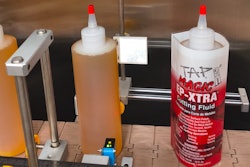Even as healthcare reform continues to take shape, pharmaceutical manufacturers can see a trend in which patient outcomes will be a primary factor in reimbursement. More than ever, packaging will be called upon to help patients adhere to medication regimens, particularly in treatment areas such as hypertension and diabetes where non-adherence poses considerable clinical and financial costs.
That was a key takeaway from the presentation, “Surviving and Thriving in a Volatile Marketplace: Strategies for Drug Companies,” given by Michael Wokasch, author and pharmaceutical industry veteran at the May 26 Healthcare Packaging Conference & Workshop in Princeton, NJ.
“On top of regulatory, sustainability and cost pressures, along comes healthcare reform and we now have another challenge in front of us as packagers,” he said. “We do know that the global healthcare market has been evolving rapidly to a much more managed and cost-conscious market, and it’s not just a US phenomenon. This rapid evolution means that you really need to be thinking about what your marketplace might look like in five or 10 years so that you can make good packaging decisions today.”
Wokasch said, “Packaging expertise has never been more important in the pharmaceutical industry than it’s going to be in the future and you are going to have more opportunities to make even more significant contributions for patient care and the commercial success of your products because of healthcare reform.”
What follows are insights from Wokasch’s presentation:
• One of the more relevant packaging-related ideas in a 489-page proposal that the Center for Medicare and Medicaid Services (CMS) drafted for establishing Accountable Care Organizations (ACOs) is a list of 65 performance metrics: specific quality and clinical outcome measures of care delivery. Healthcare providers that are part of an ACO will be required to track and report their performance against these metrics. If they don’t do that they don’t qualify for what’s called shared savings. Basically, it’s a pay-for-performance type of healthcare delivery concept, where packaging that can improve patient outcomes and lower healthcare costs will result in potential financial incentives for providers and users of that packaging.
• These types of performance metrics now provide a new context for how we need to be thinking about marketing and packaging our products. It’s no longer just about the regulatory claims for efficacy and safety. About half of these 65 performance metrics can either be positively impacted or at the very least, enhanced with creative packaging that can help educate patients about their disease and their treatments, and make it easier for patients to take.
• There will be new opportunities to package our products in a way that encourages and compels healthcare provider systems to promote our product because the packaging ensures that the patient is going to get the full benefit of the drug treatment. At the same time, the healthcare provider is going to be rewarded for improving the clinical outcomes of those patients. For pharmaceutical companies to make this happen is going to require a collaborative effort between marketing and packaging early in development.
• With a laser-like focus on pricing, packaging needs to focus on helping healthcare providers deliver higher-quality care at lower costs. This is the time for us to step up and prove the pharmaco-economic value of packaging where the cost evaluation takes into account long-term savings from fewer hospital admissions and physician visits due to better patient medication adherence and health outcomes.
• It is going to be critical that U.S. packaging experts understand how our products will be assessed against these new performance metrics and what value proposition they can put on the table. Not all products need or can benefit from creative packaging. So we have to be realistic and strategic. We are going to have to develop real-world data to support the claims that we want to make about how our packaging is going to impact these types of performance metrics. Keep in mind that healthcare providers are going to have electronic medical records data to verify, validate, and challenge our claims, and they may at some point want to hold us financially accountable if they can’t substantiate these performance-improving claims in their healthcare system.



























